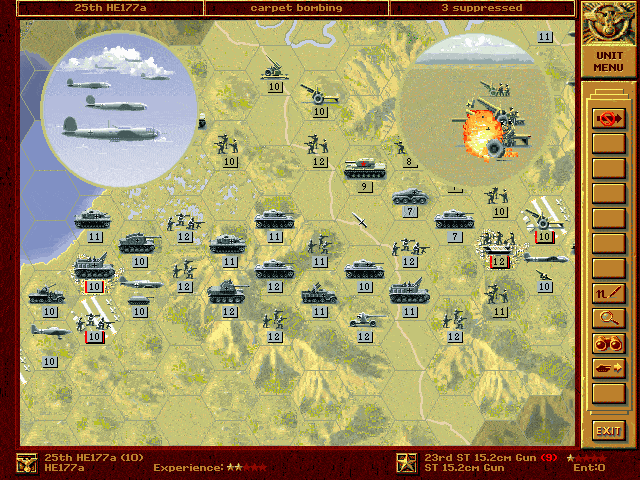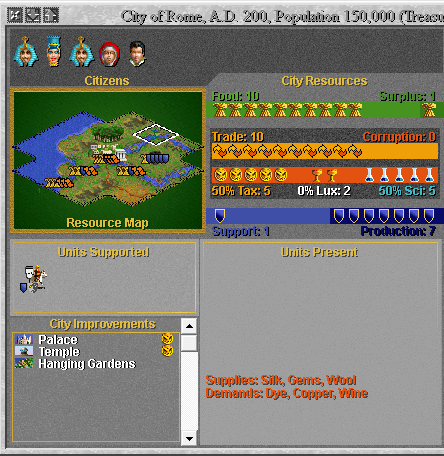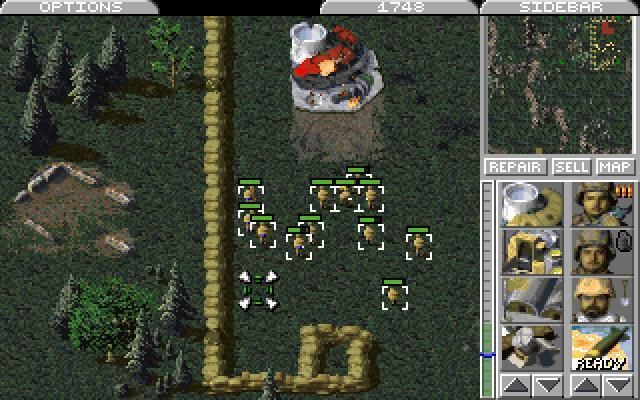- Joined
- Jan 28, 2011
- Messages
- 99,595















Tags: Arthurian Legends; Electronic Arts; Origin Systems; Richard Garriott; The Digital Antiquarian; Ultima VII: Serpent Isle; Warren Spector
For the past eight years, the Digital Antiquarian blog has been following the history of Richard Garriott and Origin Systems, developers of the Ultima series, the preeminent RPG franchise of the 1980s and early 1990s. Now he's reached the point where it all began to fall apart for them. In late 1992, faced with financial uncertainty after the underwhelming commercial reception of Ultima VII, Origin agreed to be acquired by Electronic Arts. Naturally, they had a few games already in development when this happened. For starters, there was the unambitious Forge of Virtue expansion for Ultima VII and Looking Glass' Ultima Underworld II. This article however chooses to focus on the titles that came afterwards - the two Ultima VII engine-based projects, the Worlds of Ultima-style spinoff Arthurian Legends which was soon cancelled, and direct sequel Ultima VII Part Two: Serpent Isle.
I'm actually underselling this article, which also covers Chris Roberts' Wing Commander series and failed spinoff Strike Commander. The bottom line is that Origin's first year under EA was a commercial disappointment, and 1994 was the year they had to deliver with Ultima VIII. We all know how that worked out, so prepare for impact.
For the past eight years, the Digital Antiquarian blog has been following the history of Richard Garriott and Origin Systems, developers of the Ultima series, the preeminent RPG franchise of the 1980s and early 1990s. Now he's reached the point where it all began to fall apart for them. In late 1992, faced with financial uncertainty after the underwhelming commercial reception of Ultima VII, Origin agreed to be acquired by Electronic Arts. Naturally, they had a few games already in development when this happened. For starters, there was the unambitious Forge of Virtue expansion for Ultima VII and Looking Glass' Ultima Underworld II. This article however chooses to focus on the titles that came afterwards - the two Ultima VII engine-based projects, the Worlds of Ultima-style spinoff Arthurian Legends which was soon cancelled, and direct sequel Ultima VII Part Two: Serpent Isle.
The game which would be released under the long-winded title of Ultima VII Part Two: Serpent Isle had had a complicated gestation. It was conceived as Origin’s latest solution to a problem that had long bedeviled them: that of how to leverage their latest expensive Ultima engine for more than one game without violating the letter of a promise Richard Garriott had made more than a decade before to never use the same engine for two successive mainline Ultima games. Back when Ultima VI was the latest and greatest, Origin had tried reusing its engine in a pair of spinoffs called the Worlds of Ultima, which rather awkwardly shoehorned the player’s character from the main series — the “Avatar” — into plots and settings that otherwise had nothing to do with Richard Garriott’s fantasy world of Britannia. Those two games had drawn from early 20th-century science and adventure fiction rather than Renaissance Faire fantasy, and had actually turned out quite magnificently; they’re among the best games ever to bear the Ultima name in this humble critic’s opinion. But, sadly, they had sold like the proverbial space heaters in the Sahara. It seemed that Arthur Conan Doyle and Edgar Rice Burroughs were a bridge too far for fans raised on J.R.R. Tolkien and Lord British.
So, Origin adjusted their approach when thinking of ways to reuse the even more expensive Ultima VII engine. They conceived two projects. One would be somewhat in the spirit of Worlds of Ultima, but would stick closer to Britannia-style fantasy: called Arthurian Legends, it would draw from, as you might assume, the legends of King Arthur, a fairly natural thematic fit for a series whose creator liked to call himself “Lord British.” The other game, the first to go into production, would be a direct sequel to Ultima VII, following the Avatar as he pursued the Guardian, that “Destroyer of Worlds” from the first game, from Britannia to a new world. This game, then, was Serpent Isle. Originally, it was to have had a pirate theme, all fantastical derring-do on an oceanic world, with a voodoo-like magic system in keeping with Earthly legends of Caribbean piracy.
This piratey Serpent Isle was first assigned to Origin writer Jeff George, but he struggled to find ways to adapt the idea to the reality of the Ultima VII engine’s affordances. Finally, after spinning his wheels for some months, he left the company entirely. Warren Spector, who had become Origin’s resident specialist in Just Getting Things Done, then took over the project and radically revised it, dropping the pirate angle and changing the setting to one that was much more Britannia-like, right down to a set of towns each dedicated to one of a set of abstract virtues. Having thus become a less excitingly original concept but a more practical one from a development perspective, Serpent Isle started to make good progress under Spector’s steady hand. Meanwhile another small team started working up a script for Arthurian Legends, which was planned as the Ultima VII engine’s last hurrah.
Yet the somewhat muted response to the first Ultima VII threw a spanner in the works. Origin’s management team was suddenly second-guessing the entire philosophy on which their company had been built: “Do we still create worlds?” Arthurian Legends was starved of resources amidst this crisis of confidence, and finally cancelled in January of 1993. Writer and designer Sheri Graner Ray, one of only two people left on the project at the end, invests its cancellation with major symbolic importance:
I truly believe that on some level we knew that this was the death knell for Origin. It was the last of the truly grass-roots games in production there… the last one that was conceived, championed, and put into development purely by the actual developers, with no support or input from the executives. It was actually, kinda, the end of an era for the game industry in general, as it was also during this time that we were all adjusting to the very recent EA buyout of Origin.
Serpent Isle, on the other hand, was too far along by the time the verdict was in on the first Ultima VII to make a cancellation realistic. It would instead go down in the recollection of most hardcore CRPG fans as the last “real” Ultima, the capstone to the process of evolution a young Richard Garriott had set in motion back in 1980 with a primitive BASIC game called Akalabeth. And yet the fact remains that it could have been so, so much better, had it only caught Origin at a less uncertain, more confident time.
Serpent Isle lacks the refreshingly original settings of the two Worlds of Ultima games, as it does the surprisingly fine writing of the first Ultima VII; Raymond Benson, the head writer on the latter project, worked on Serpent Isle only briefly before decamping to join MicroProse Software. In compensation, though, Serpent Isle is arguably a better game than its predecessor through the first 65 percent or so of its immense length. Ultima VII: The Black Gate can at times feel like the world’s most elaborate high-fantasy walking simulator; you really do spend most of your time just walking around and talking to people, an exercise that’s made rewarding only by the superb writing. Serpent Isle, by contrast, is full to bursting with actual things to do: puzzles to solve, dungeons to explore, quests to fulfill. It stretches its engine in all sorts of unexpected and wonderfully hands-on directions. Halfway in, it seems well on its way to being one of the best Ultima games of all, as fine a sendoff as any venerable series could hope for.
In the end, though, its strengths were all undone by Origin’s crisis of faith in the traditional Ultima concept. Determined to get its sales onto the books of what had been a rather lukewarm fiscal year and to wash their hands of the past it now represented, management demanded that it go out on March 25, 1993, the last day of said year. As a result, the last third or so of Serpent Isle is painfully, obviously unfinished. Conversations become threadbare, plot lines are left to dangle, side quests disappear, and bugs start to sprout up everywhere you look. As the fiction becomes a thinner and thinner veneer pasted over the mechanical nuts and bolts of the design, solubility falls by the wayside. By the end, you’re wandering through a maze of obscure plot triggers that have no logical connection with the events they cause, making a walkthrough a virtual necessity. It’s a downright sad thing to have to witness. Had its team only been allowed another three or four months to finish the job, Serpent Isle could have been not only a great final old-school Ultima but one of the best CRPGs of any type that I’ve ever played, a surefire entrant in my personal gaming hall of fame. As it is, though, it’s a bitter failure, arguably the most heartbreaking one of Warren Spector’s storied career.
And there was to be one final note of cutting irony in all of this: Serpent Isle, which Origin released without a lot of faith in its commercial potential, garnered a surprisingly warm reception among critics and fans alike, and wound up selling almost as well as the first Ultima VII. Indeed, it performed so well that the subject of doing “more games in that vein,” in addition to or even instead of a more streamlined Ultima VIII, was briefly discussed at Origin. As things transpired, though, its success led only to an expansion pack called The Silver Seed before the end of the year; this modest effort became the true swansong for the Ultima VII engine, as well as the whole era of the 100-hour-plus, exploration-focused, free-form single-player CRPG at Origin in general. The very philosophy that had spawned the company, that had been at the core of its identity for the first decade of its existence, was fading into history.
So, Origin adjusted their approach when thinking of ways to reuse the even more expensive Ultima VII engine. They conceived two projects. One would be somewhat in the spirit of Worlds of Ultima, but would stick closer to Britannia-style fantasy: called Arthurian Legends, it would draw from, as you might assume, the legends of King Arthur, a fairly natural thematic fit for a series whose creator liked to call himself “Lord British.” The other game, the first to go into production, would be a direct sequel to Ultima VII, following the Avatar as he pursued the Guardian, that “Destroyer of Worlds” from the first game, from Britannia to a new world. This game, then, was Serpent Isle. Originally, it was to have had a pirate theme, all fantastical derring-do on an oceanic world, with a voodoo-like magic system in keeping with Earthly legends of Caribbean piracy.
This piratey Serpent Isle was first assigned to Origin writer Jeff George, but he struggled to find ways to adapt the idea to the reality of the Ultima VII engine’s affordances. Finally, after spinning his wheels for some months, he left the company entirely. Warren Spector, who had become Origin’s resident specialist in Just Getting Things Done, then took over the project and radically revised it, dropping the pirate angle and changing the setting to one that was much more Britannia-like, right down to a set of towns each dedicated to one of a set of abstract virtues. Having thus become a less excitingly original concept but a more practical one from a development perspective, Serpent Isle started to make good progress under Spector’s steady hand. Meanwhile another small team started working up a script for Arthurian Legends, which was planned as the Ultima VII engine’s last hurrah.
Yet the somewhat muted response to the first Ultima VII threw a spanner in the works. Origin’s management team was suddenly second-guessing the entire philosophy on which their company had been built: “Do we still create worlds?” Arthurian Legends was starved of resources amidst this crisis of confidence, and finally cancelled in January of 1993. Writer and designer Sheri Graner Ray, one of only two people left on the project at the end, invests its cancellation with major symbolic importance:
I truly believe that on some level we knew that this was the death knell for Origin. It was the last of the truly grass-roots games in production there… the last one that was conceived, championed, and put into development purely by the actual developers, with no support or input from the executives. It was actually, kinda, the end of an era for the game industry in general, as it was also during this time that we were all adjusting to the very recent EA buyout of Origin.
Serpent Isle lacks the refreshingly original settings of the two Worlds of Ultima games, as it does the surprisingly fine writing of the first Ultima VII; Raymond Benson, the head writer on the latter project, worked on Serpent Isle only briefly before decamping to join MicroProse Software. In compensation, though, Serpent Isle is arguably a better game than its predecessor through the first 65 percent or so of its immense length. Ultima VII: The Black Gate can at times feel like the world’s most elaborate high-fantasy walking simulator; you really do spend most of your time just walking around and talking to people, an exercise that’s made rewarding only by the superb writing. Serpent Isle, by contrast, is full to bursting with actual things to do: puzzles to solve, dungeons to explore, quests to fulfill. It stretches its engine in all sorts of unexpected and wonderfully hands-on directions. Halfway in, it seems well on its way to being one of the best Ultima games of all, as fine a sendoff as any venerable series could hope for.
In the end, though, its strengths were all undone by Origin’s crisis of faith in the traditional Ultima concept. Determined to get its sales onto the books of what had been a rather lukewarm fiscal year and to wash their hands of the past it now represented, management demanded that it go out on March 25, 1993, the last day of said year. As a result, the last third or so of Serpent Isle is painfully, obviously unfinished. Conversations become threadbare, plot lines are left to dangle, side quests disappear, and bugs start to sprout up everywhere you look. As the fiction becomes a thinner and thinner veneer pasted over the mechanical nuts and bolts of the design, solubility falls by the wayside. By the end, you’re wandering through a maze of obscure plot triggers that have no logical connection with the events they cause, making a walkthrough a virtual necessity. It’s a downright sad thing to have to witness. Had its team only been allowed another three or four months to finish the job, Serpent Isle could have been not only a great final old-school Ultima but one of the best CRPGs of any type that I’ve ever played, a surefire entrant in my personal gaming hall of fame. As it is, though, it’s a bitter failure, arguably the most heartbreaking one of Warren Spector’s storied career.
And there was to be one final note of cutting irony in all of this: Serpent Isle, which Origin released without a lot of faith in its commercial potential, garnered a surprisingly warm reception among critics and fans alike, and wound up selling almost as well as the first Ultima VII. Indeed, it performed so well that the subject of doing “more games in that vein,” in addition to or even instead of a more streamlined Ultima VIII, was briefly discussed at Origin. As things transpired, though, its success led only to an expansion pack called The Silver Seed before the end of the year; this modest effort became the true swansong for the Ultima VII engine, as well as the whole era of the 100-hour-plus, exploration-focused, free-form single-player CRPG at Origin in general. The very philosophy that had spawned the company, that had been at the core of its identity for the first decade of its existence, was fading into history.
I'm actually underselling this article, which also covers Chris Roberts' Wing Commander series and failed spinoff Strike Commander. The bottom line is that Origin's first year under EA was a commercial disappointment, and 1994 was the year they had to deliver with Ultima VIII. We all know how that worked out, so prepare for impact.











![Have Many Potato [2013] Codex 2013](/forums/smiles/campaign_tags/campaign_potato2013.png)
![The Year of Incline [2014] Codex 2014](/forums/smiles/campaign_tags/campaign_incline2014.png)















